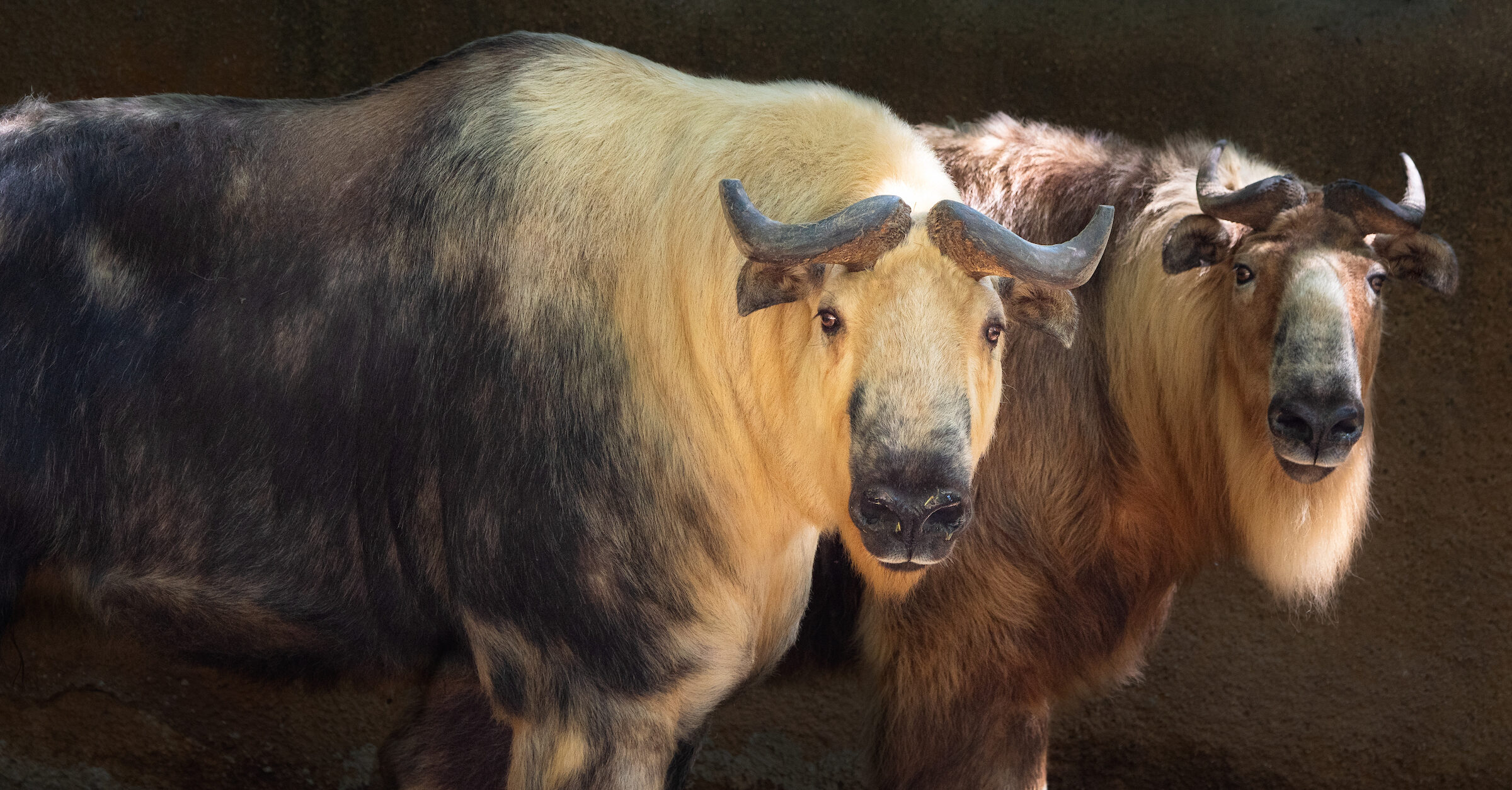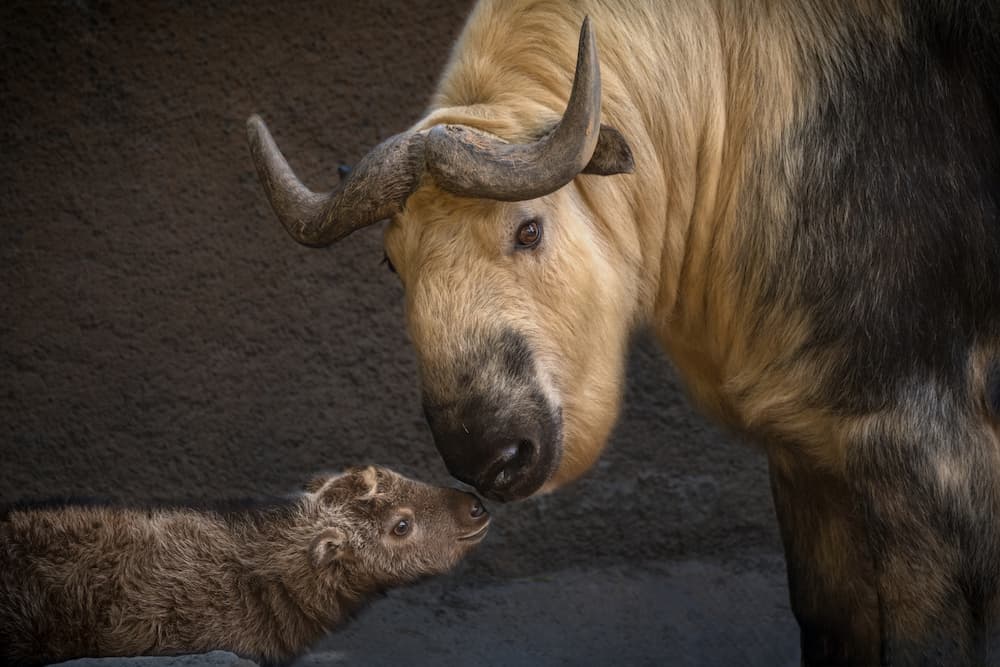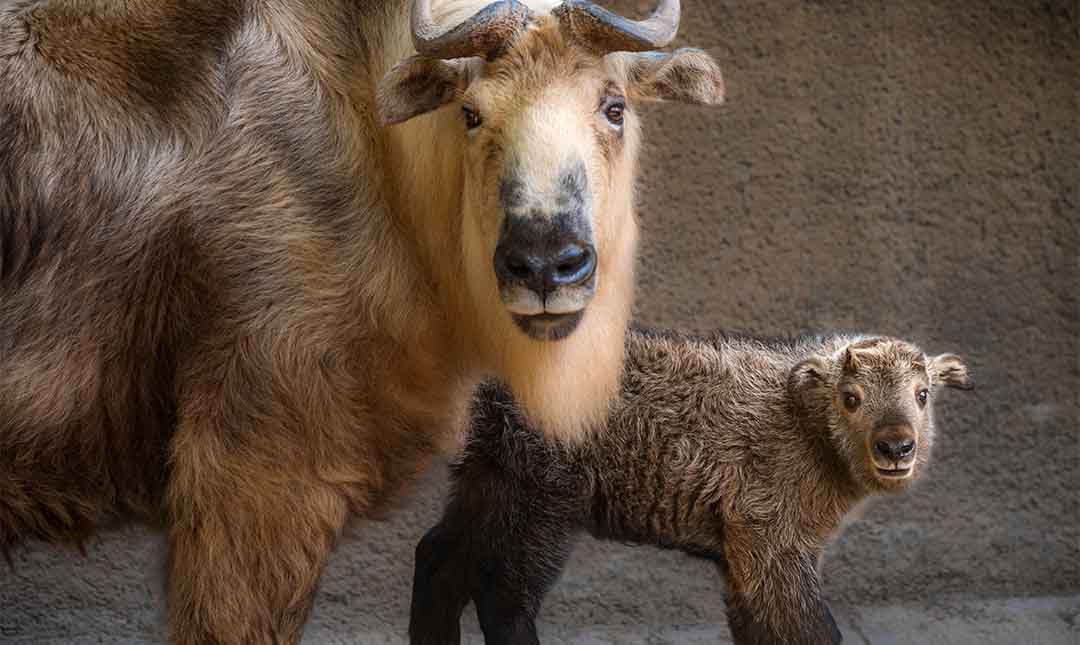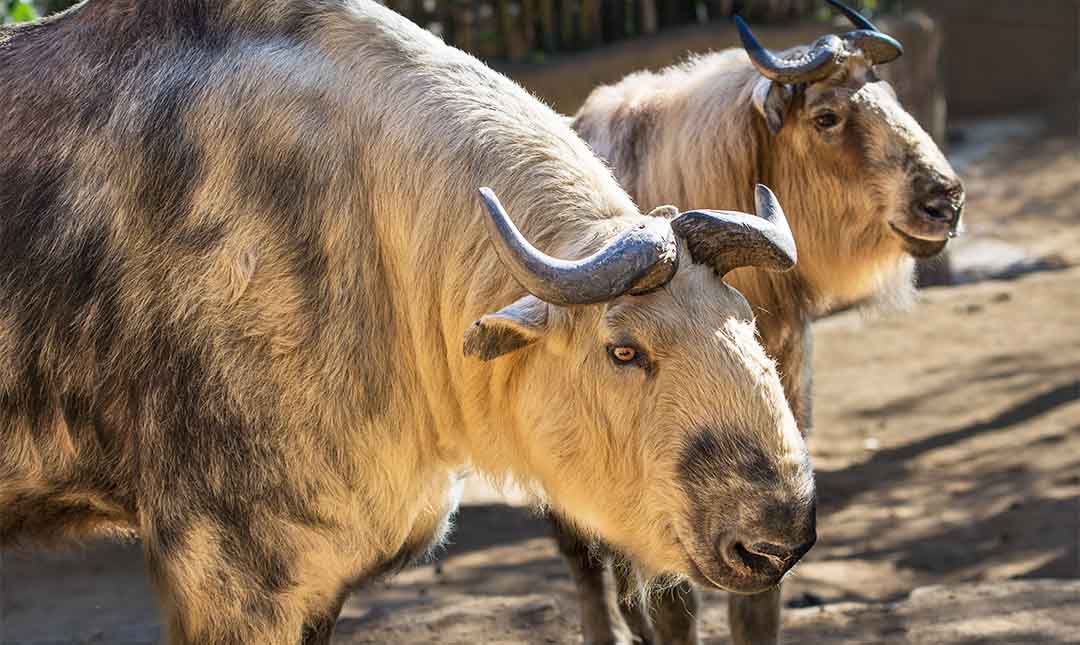About
The takin belongs to a family of animals known as goat-antelopes, and they have many adaptations that help them survive in high elevation mountain habitat. Short legs and split hooves make them sure-footed even on treacherous cliffs. In winter, their coats thicken to insulate them from the cold. Their skin produces an oily substance that helps waterproof their hair. Large nasal passages allow incoming air to warm before it reaches the lungs, thereby conserving body heat.
Herds of up to 300 individuals migrate up steep mountains to access vegetation each summer. When food becomes scarce in cooler seasons, smaller groups of 10 to 35 descend to feed in valley forests. Older bulls are mostly solitary except in late summer’s rutting (mating) season. In early spring, cows give birth to one kid after a seven- or eight-month gestation. When threatened, takins roar or bellow to intimidate their adversaries. A coughing sound warns other herd members of danger. Other than bears and wolves, they have few natural predators. Sichuan takin populations are threatened by habitat loss, illegal hunting, and human disturbance. Sichuan takins are considered a national treasure in China and given protection similar to giant pandas, but enforcement outside designated reserves is challenging.

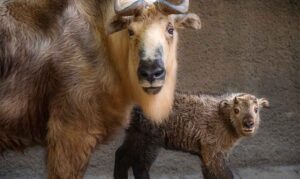
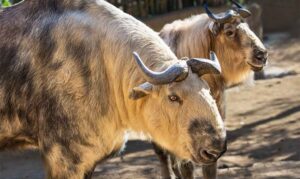
Status
Sichuan takin are considered vulnerable to extinction. Primary threats to their survival are habitat loss, harvesting and hunting, and human disturbance. They are protected by Chinese law, and China has created two reserves for them. Because takin habitat is often inaccessible to humans, specific data on population distribution and size is lacking.
Habitat
Takins live in forests, shrublands, and grasslands in China and the eastern Himalayas from elevations of 4,000–12,000 feet. In China they inhabit the same bamboo forests as the giant panda.
Diet
Takin feed on bamboo shoots as well as foliage, bark, and flowers from various trees and shrubs. To reach leaves on higher branches they may stand on their hind legs with their forelegs propped against the tree. They require salt in their diet and will often linger at salt licks for several days. Like other ruminants, takin chew cud and have a four-chambered stomach.
Physical Characteristics
Takins measure 5 to 7 feet in length and 3 to 4 feet tall at the shoulder. Males can weigh up to 790 pounds; females are smaller and weigh up to 550 pounds. Takin live 12 to 15 years in the wild.
LOCATION WITHIN the zoo
You’ll find this animal in the Asia section. See Zoo Map.

